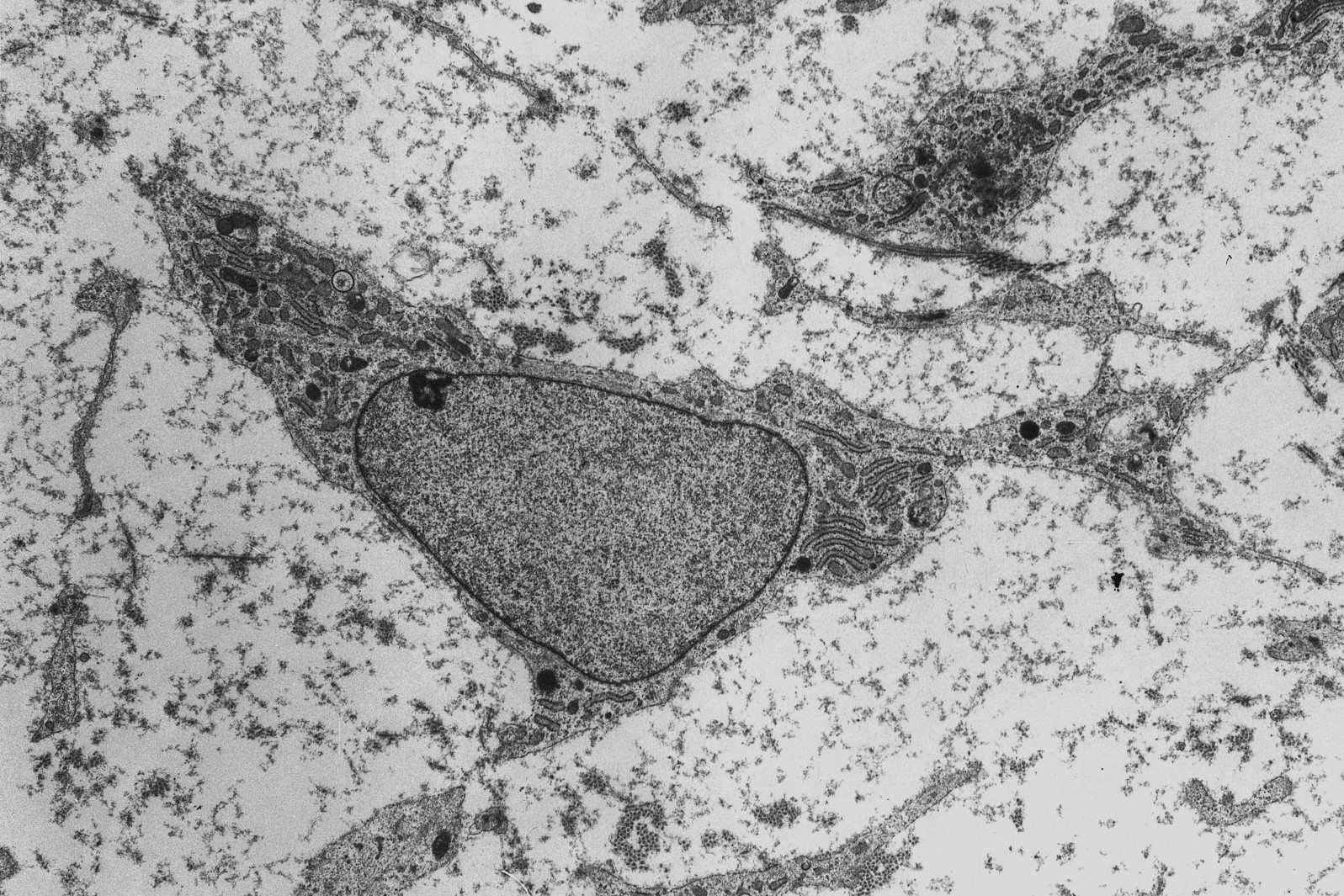
Osteochondroprogenitor cells are a fascinating part of our body's cellular makeup. These cells are precursors to both bone and cartilage cells, playing a crucial role in skeletal development and repair. Found primarily in the bone marrow, periosteum, and growth plates, they have the unique ability to differentiate into osteoblasts or chondrocytes. This dual potential makes them vital for healing fractures and maintaining healthy bones and joints. Understanding these cells can help in developing treatments for conditions like osteoporosis and arthritis. Let's dive into 25 intriguing facts about these remarkable cells that keep our skeletons strong and resilient.
Key Takeaways:
- Osteochondroprogenitor cells are versatile stem cells found in bone and cartilage, crucial for bone growth, repair, and joint maintenance. They have potential in treating bone diseases and spinal cord injuries.
- These cells respond to mechanical stress, secrete proteins for tissue support, and play a role in bone mineralization. While promising for medical treatments, challenges include cell isolation and immune rejection.
What are Osteochondroprogenitor Cells?
Osteochondroprogenitor cells are a type of stem cell that can develop into bone and cartilage cells. These cells play a crucial role in bone growth and repair. Here are some fascinating facts about these versatile cells.
- Osteochondroprogenitor cells are found in the bone marrow, periosteum, and endosteum.
- They have the potential to differentiate into osteoblasts, which form bone, and chondrocytes, which form cartilage.
- These cells are essential for skeletal development during embryogenesis.
- Osteochondroprogenitor cells contribute to the healing of bone fractures.
- They are involved in the maintenance and repair of cartilage, especially in joints.
How Do Osteochondroprogenitor Cells Function?
Understanding the function of osteochondroprogenitor cells helps us appreciate their importance in the body. Here are some key points about their function.
- These cells respond to mechanical stress by differentiating into bone-forming cells.
- They secrete extracellular matrix proteins that provide structural support to tissues.
- Osteochondroprogenitor cells play a role in the mineralization of bone.
- They interact with other cell types, such as osteoclasts, to regulate bone remodeling.
- Growth factors like BMPs (Bone Morphogenetic Proteins) influence their differentiation.
Where Are Osteochondroprogenitor Cells Located?
The location of osteochondroprogenitor cells in the body determines their function and accessibility for medical treatments. Here are some details about their locations.
- These cells are abundant in the periosteum, a membrane covering bones.
- They are also found in the endosteum, lining the inner surface of bones.
- Bone marrow is another rich source of osteochondroprogenitor cells.
- They are present in the growth plates of developing bones.
- Osteochondroprogenitor cells can be isolated from adipose tissue.
Medical Applications of Osteochondroprogenitor Cells
Osteochondroprogenitor cells have significant potential in medical treatments, particularly in regenerative medicine. Here are some applications.
- These cells are used in bone grafting procedures to enhance bone healing.
- They are being researched for their potential in treating osteoarthritis.
- Osteochondroprogenitor cells can be used to engineer cartilage for joint repair.
- They are involved in developing treatments for bone diseases like osteoporosis.
- Stem cell therapy using these cells is being explored for spinal cord injuries.
Challenges and Future Directions
While osteochondroprogenitor cells hold great promise, there are challenges to overcome. Here are some of the hurdles and future directions in this field.
- Isolating and expanding these cells in the lab can be difficult.
- Ensuring the cells differentiate into the desired cell type is a challenge.
- There is a risk of immune rejection in stem cell therapies.
- Research is ongoing to improve the efficiency of cell-based treatments.
- Future studies aim to better understand the signaling pathways that regulate these cells.
Final Thoughts on Osteochondroprogenitor Cells
Osteochondroprogenitor cells play a crucial role in bone and cartilage formation. These cells, found in bone marrow, periosteum, and growth plates, can differentiate into osteoblasts and chondrocytes. This ability makes them vital for skeletal development and repair. Research on these cells has opened doors to advanced treatments for bone-related conditions like osteoporosis and fractures. Understanding their behavior and potential can lead to breakthroughs in regenerative medicine. Scientists are continually exploring ways to harness these cells for therapeutic purposes. Their unique properties offer hope for innovative treatments that could improve the quality of life for many. As research progresses, the potential applications of osteochondroprogenitor cells will likely expand, making them a key focus in medical science. Keep an eye on this exciting field, as it holds promise for future medical advancements.
Frequently Asked Questions
Was this page helpful?
Our commitment to delivering trustworthy and engaging content is at the heart of what we do. Each fact on our site is contributed by real users like you, bringing a wealth of diverse insights and information. To ensure the highest standards of accuracy and reliability, our dedicated editors meticulously review each submission. This process guarantees that the facts we share are not only fascinating but also credible. Trust in our commitment to quality and authenticity as you explore and learn with us.
